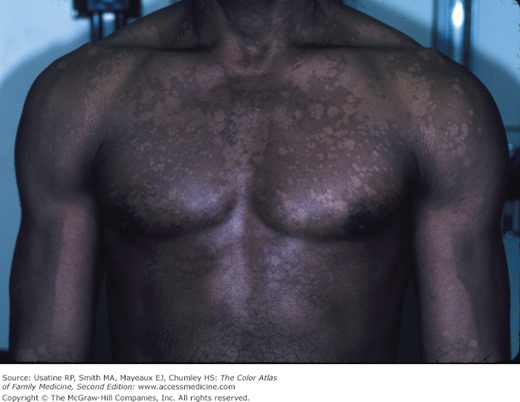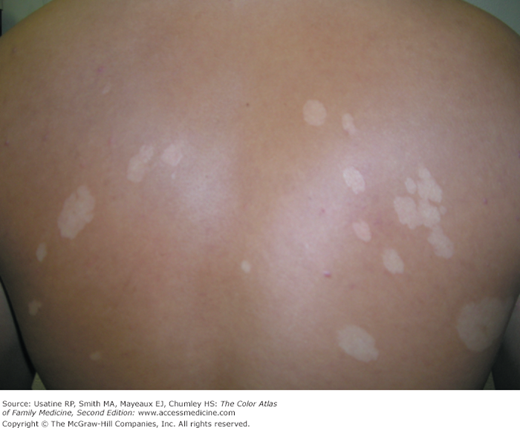Patient Story
A young black man presents to the office with a 5-year history of white spots on his trunk (Figure 141-1). He denies any symptoms but worries if this could spread to his girlfriend. These spots get worse during the summer months but never go away completely. He was relieved to receive a treatment for his tinea versicolor and to find out that it is rarely spread to others through contact.
Introduction
Synonyms
Epidemiology
Etiology and Pathophysiology
- Tinea versicolor is caused by Pityrosporum (M. furfur), which is a lipophilic yeast that can be normal human cutaneous flora.
- Pityrosporum exists in two shapes—Pityrosporum ovale (oval) and Pityrosporum orbiculare (round).
- Tinea versicolor starts when the yeast that normally colonizes the skin changes from the round form to the pathologic mycelial form and then invades the stratum corneum.1
- Pityrosporum is also associated with seborrhea and Pityrosporum folliculitis.
- The white and brown colors are secondary to damage caused by the Pityrosporum to the melanocytes, while the pink is an inflammatory reaction to the organism.
- Pityrosporum thrive on sebum and moisture; they tend to grow on the skin in areas where there are sebaceous follicles secreting sebum.
Diagnosis
Tinea versicolor consists of hypopigmented, hyperpigmented, or pink macules and patches on the trunk that are finely scaling and well-demarcated. Versicolor means a variety of or variation in colors; tinea versicolor tends to come in white, pink, and brown colors (Figures 141-1, 141-2, 141-3, 141-4, 141-5).







